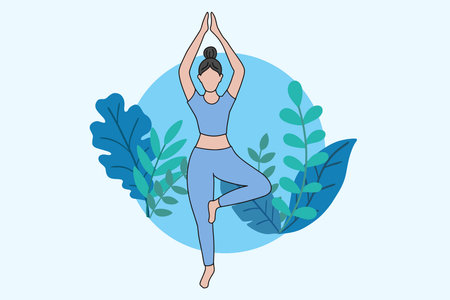Introduction to Yoga for Indian Seniors
In India, yoga is more than just a physical practice—it is a deeply rooted tradition, woven into the fabric of daily life for centuries. For seniors, especially, traditional yoga offers holistic benefits that go beyond flexibility and strength. With India’s rapidly growing elderly population, there is an increasing need to focus on methods that support mobility and independence in later years. Engaging in yoga and pranayama not only helps maintain functional movement but also nurtures mental well-being and spiritual connection, which are highly valued in Indian culture. Elders often find joy and comfort in group yoga sessions at local parks or community centres, echoing the age-old custom of practicing together under the guidance of experienced instructors or gurus. Embracing these practices enables seniors to uphold their independence, manage age-related challenges with grace, and continue participating actively in family and community life—a cornerstone of Indian society.
2. Understanding Pranayama and Its Benefits
Pranayama, a cornerstone of Indian yogic tradition, refers to the practice of controlling the breath—Prana meaning life force and Ayama meaning extension or control. In Indian culture, pranayama is more than a breathing exercise; it is a sacred art that connects body, mind, and spirit, enhancing overall wellbeing. For seniors, incorporating pranayama into daily routines can bring about remarkable changes, especially when it comes to walking and mobility.
What Is Pranayama?
Pranayama involves conscious regulation of the breath through various techniques. These techniques are simple yet profound and have been practiced in Indian homes and ashrams for generations. By practicing pranayama, seniors can improve oxygen flow to their muscles, boost energy levels, and achieve better balance—all essential for safe and confident walking.
How Does Breathwork Support Walking and Mobility?
When you breathe deeply and mindfully, your lungs expand fully, supplying more oxygen to your body. This oxygen is crucial for muscle function and stability, which directly impacts your ability to walk comfortably. Additionally, breathwork calms the mind, reduces stress, and improves focus—helping seniors stay steady on their feet during daily activities.
Key Benefits of Pranayama for Seniors
| Benefit | Description | Cultural Relevance |
|---|---|---|
| Improved Balance | Enhanced oxygenation helps maintain body equilibrium while walking. | Traditionally practiced before morning walks in many Indian families. |
| Increased Energy | Boosts stamina by energizing body cells through deep breathing. | Commonly included in daily rituals for vitality (pratahkalin sadhana). |
| Calm Mind | Reduces anxiety and nervousness during movement. | Taught in community yoga classes across India for mental peace (shanti). |
| Better Focus | Sharpens concentration to avoid falls or injuries while walking. | A part of mindfulness practices like dhyana in Indian tradition. |
By embracing pranayama as part of their yoga routine, seniors can harness centuries-old wisdom rooted in our Indian heritage. This simple yet powerful breathwork not only prepares the body for asanas but also infuses each step with stability and confidence—making daily walking safer and more enjoyable.

3. Foundational Asanas for Joint Health
For Indian seniors looking to enhance walking ability and overall mobility, practicing gentle and accessible yoga asanas is highly beneficial. Focusing on foundational postures not only supports joint health but also builds the strength and balance necessary for daily activities.
Tadasana (Mountain Pose): Strengthening the Foundation
Tadasana, or Mountain Pose, is a simple yet powerful asana that serves as the base for many standing postures. It helps in improving posture, strengthening the legs, and increasing awareness of body alignment. For seniors, practicing Tadasana regularly encourages proper weight distribution through the feet and ankles, which is essential for stable walking. Stand with feet together or slightly apart for comfort, press evenly through the soles, engage the thighs gently, and lengthen the spine while keeping the shoulders relaxed. This pose is often used in community yoga classes across India due to its accessibility and profound benefits.
Vrikshasana (Tree Pose): Cultivating Balance and Confidence
Vrikshasana, or Tree Pose, is another excellent asana suited for Indian elders who wish to improve their balance and leg strength. This posture mimics the steady stance of a tree—rooted yet flexible. Begin by standing tall; shift weight onto one foot and place the other foot on the inner thigh or calf (avoid the knee). Hands can be brought together at the heart center or extended overhead if comfortable. Practicing Vrikshasana near a wall or sturdy support is recommended for added confidence. This asana not only strengthens muscles around the knees and hips but also helps calm the mind—a valuable benefit for seniors navigating age-related changes.
Cultural Relevance: Integrating Traditional Practices
Both Tadasana and Vrikshasana are well-known in Indian yoga traditions and are commonly included in morning routines or group sessions held at local parks (such as those organized by resident welfare associations or senior citizen clubs). These practices honor Indias rich heritage while supporting healthy aging. Seniors are encouraged to perform these asanas barefoot when possible, feeling direct contact with Mother Earth (Prithvi), believed in Ayurveda to enhance grounding and joint vitality.
Safety First: Gentle Progression
It is important for seniors to listen to their bodies and avoid overstretching. Using props such as chairs or walls provides extra support during practice. Engaging in these foundational asanas daily—even for just a few minutes—can significantly improve joint health, walking stability, and overall mobility, allowing seniors to maintain independence in their golden years.
Chair-Based and Supportive Variations
For many Indian seniors, practising yoga on the floor can be challenging due to limited mobility, chronic joint pain, or space constraints common in Indian households. Chair-based yoga and supportive asana modifications provide accessible pathways for elders to experience the benefits of yoga and pranayama safely. Below, we offer practical guidance and alternatives for key postures, using everyday household items like sturdy chairs, cushions, and walls commonly found in Indian homes.
Benefits of Chair-Based Yoga for Indian Elders
- Safety: Reduces risk of falls and injuries.
- Accessibility: Enables those with knee or back issues to participate.
- Cultural Fit: Adapts to compact living spaces often seen in Indian cities.
- Consistency: Encourages regular practice without the need for specialised equipment.
Common Asanas and Their Chair-Based Modifications
| Traditional Asana | Chair-Based Alternative | Instructions |
|---|---|---|
| Tadasana (Mountain Pose) | Seated Tadasana | Sit upright with feet flat on the ground. Raise arms overhead, palms facing each other. Hold for 5 breaths. |
| Vrikshasana (Tree Pose) | Supported Tree Pose | Sit with one ankle resting over the opposite knee. Keep spine straight and hands at heart centre or on chair arms for support. |
| Ardha Matsyendrasana (Seated Twist) | Chair Spinal Twist | Sit sideways on a chair; twist towards the chair back while holding it gently. Repeat both sides. |
| Pawanmuktasana (Wind-Relieving Pose) | Knee Hug on Chair | Sit tall, draw one knee toward chest with both hands. Hold for several breaths, then switch sides. |
| Anulom Vilom (Alternate Nostril Breathing) | No modification needed | Sit comfortably on the chair, keep spine erect, and practise pranayama as usual. |
Additional Tips for Indian Households
- Select a sturdy plastic or wooden chair without wheels for stability.
- If sitting long is uncomfortable, place a folded cotton dupatta or towel on the seat for cushioning.
- Practise near a wall if extra support is needed during standing poses or transitions.
- Create a calm environment by turning off distractions—television or mobile phones—during practice time.
Cultural Considerations for Family Participation
Encourage family members to join seniors in their chair-based yoga sessions. Involving grandchildren or caregivers fosters bonding, increases motivation, and aligns with traditional Indian values of intergenerational support. Gentle reminders in local languages or through community WhatsApp groups can also help maintain consistency in practice among elders.
5. Daily Practice Routine for Improved Mobility
Simple Yoga Sequence for Indian Seniors
For seniors in India, adopting a daily yoga and pranayama routine can significantly enhance mobility and support walking ability. A gentle sequence practiced either in the morning or evening fits well with traditional Indian lifestyles and helps elders maintain an active, independent life. Below is a suggested routine that can be easily followed at home, taking into account common cultural practices such as early morning activities and evening relaxation.
Step-by-Step Morning or Evening Yoga Routine
Tadasana (Mountain Pose)
Begin by standing tall with feet together. Inhale deeply, raise your arms overhead, and stretch your body upwards. Hold for 5 breaths to improve balance and posture—essential for confident walking.
Vrikshasana (Tree Pose)
With hands in Namaste position, place one foot on the opposite inner thigh or calf (avoid the knee). Focus on a fixed point ahead to help with stability. This asana encourages leg strength and steadiness.
Marjariasana-Bitilasana (Cat-Cow Stretch)
On all fours, alternate arching and rounding your back. This movement maintains spinal flexibility and relieves stiffness commonly experienced by elders.
Setu Bandhasana (Bridge Pose)
Lie on your back, bend knees, and lift hips while keeping feet flat. This pose strengthens the lower back, glutes, and legs—key areas for improved mobility during walking.
Anulom Vilom Pranayama
Sit comfortably with your spine straight. Practice alternate nostril breathing for 3-5 minutes to calm the mind, enhance lung function, and energise the body.
Integrating Walking with Yoga
After your yoga practice, consider a short walk within your home compound or nearby park—a common habit among Indian seniors. This not only supports joint health but also provides an opportunity for social interaction and exposure to fresh air.
Cultural Tips for Consistency
Encourage family members to join or remind elders about their practice time, turning yoga into a shared activity. Using a light cotton mat or even practicing on a clean chatai is culturally resonant and comfortable. Remember to wear loose-fitting kurta-pajamas or saree for ease of movement.
By following this simple daily routine tailored to the Indian context, seniors can experience better mobility, improved mood, and greater independence in their day-to-day lives.
6. Safety Tips and Community Support
Practice Yoga Safely at Home
For seniors in India, it is essential to approach yoga and pranayama practice with safety in mind, especially when exercising at home. Always begin with a gentle warm-up, wear comfortable cotton clothing suitable for the Indian climate, and use a non-slip yoga mat. Ensure your practice area is free from obstacles and well-ventilated, ideally near an open window or balcony for fresh air. Seniors should listen to their bodies; if any asana or breathing technique causes discomfort or pain, pause immediately. It is also advisable to keep a bottle of water nearby to stay hydrated, particularly during warmer months.
Consult with Healthcare Professionals
Before starting a new yoga routine, especially if you have chronic health conditions such as hypertension, diabetes, or joint issues common among Indian elders, consult your family doctor or an Ayurvedic practitioner. They can provide personalized recommendations or suggest modifications based on your medical history. This ensures your yoga journey is both safe and effective.
The Importance of Community Connections
Practicing yoga within a community setting can greatly enhance motivation and adherence for seniors. Many localities across India now offer senior-friendly yoga classes led by certified instructors who understand the unique needs of older adults. Joining these groups—whether at a neighbourhood park, temple hall, or community centre—provides cultural familiarity and fosters a sense of belonging. Sharing experiences in local languages and celebrating traditional festivals together deepens social bonds and encourages regular participation.
Engage with Local Yoga Instructors
Indian yoga teachers are adept at incorporating cultural elements such as chanting shlokas or playing devotional music during sessions, making the experience more meaningful for seniors. These instructors can monitor your posture and breathing techniques, providing immediate feedback to prevent injury.
Leverage Senior Groups for Support
Senior citizens’ associations and NGOs often organise group yoga sessions tailored to different abilities, offering encouragement and companionship. Being part of such groups not only boosts physical mobility but also helps combat loneliness—a significant concern among the elderly population in India.
In summary, while practicing yoga and pranayama at home is convenient, prioritising safety and tapping into community resources ensures long-term benefits for walking, mobility, and overall well-being in our Indian seniors.

